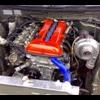Cam Gear Problem - Dyno Graph Inside
Announcements
-
Similar Content
-
Latest Posts
-
Have you got a pic of the actuator? My guess is that unit has failed internally and was flopping around, so the previous engineer who owned it forced it to be fully open to cold air (blocking the heater core path). As far as you can tell, is anything else wrong in the system? Likely you just need a new actuator (not sure how available they are) and then "installation is the reverse of disassembly"
-
I'm happy with the Lsailt unit that I put in, it puts full Android on the top screen so you can run whatever Nav and other Apps you want, while still existing inside the factory functionality like automatic reverse cams, audio input switching, retains factory bluetooth etc. Not cheap and the install was moderate (not simple, not hard) Yours is a V36 not V37 though right?
-
Yeap, all the NC's that I originally looked at that had a hard top were PRHT, which makes the roof line look horrible, hence why I said nope to them My only caveat for another MX5 was it needed to have a hard top, and initially I didn't think you could get a detachable hard top for the NC, like my NB had Again, a big thanks to Matty for helping me source the detachable hard top for my little girl, they are as rare as hens teeth in Australia, and the few people who have them, keep them Also to Greg, for initially pointing me in the NC direction NC PRHT 🤢🤮 Not mine (I really should take more photos of my car), but a NC with the detachable hard top 😁 To me, the difference in how the detachable hard top roof line looks, and how it actually follows the bodies lines, like they do on NA's and NB's, is chalk and cheese compared to the bulbous looking PRHT
-
By TurboTapin · Posted
Haha good old Letterkenny! If you're looking for another great english canadian comedy, I strongly recommend Trailer Park Boys.
-







Recommended Posts
Create an account or sign in to comment
You need to be a member in order to leave a comment
Create an account
Sign up for a new account in our community. It's easy!
Register a new accountSign in
Already have an account? Sign in here.
Sign In Now